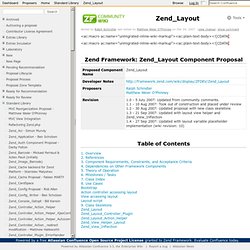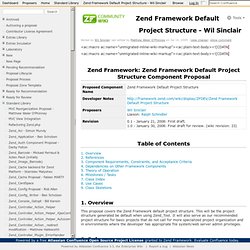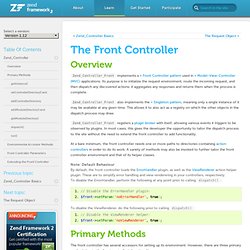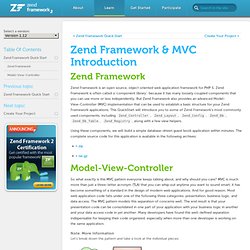

Model–view–controller. Model–view–controller (MVC) is a software pattern for implementing user interfaces.

It divides a given software application into three interconnected parts, so as to separate internal representations of information from the ways that information is presented to or accepted from the user.[1][2] The central component, the model, consists of application data, business rules, logic and functions. A view can be any output representation of information, such as a chart or a diagram. Multiple views of the same information are possible, such as a bar chart for management and a tabular view for accountants.
The third part, the controller, accepts input and converts it to commands for the model or view.[3] Component interactions[edit] A typical collaboration of the MVC components In addition to dividing the application into three kinds of components, the Model–view–controller (MVC) design defines the interactions between them.[4] Use in web applications[edit] History[edit] See also[edit] Modules and Layouts. _Layout - Proposers. <ac:macro ac:name="unmigrated-inline-wiki-markup"><ac:plain-text-body><!

[CDATA[ 1. Overview Zend_Layout is a composite component that joins the Controller, View and ViewRenderer together to implement a two-step-view pattern for solving the problem of "consistent look and feel". 2. 3. Must work with a dispatch loop and named response segments. Framework Default Project Structure - Wil Sinclair - Proposers. <ac:macro ac:name="unmigrated-inline-wiki-markup"><ac:plain-text-body><!

[CDATA[ 1. Overview This proposal covers the Zend Framework default project structure. This will be the project structure generated be default when using Zend_Tool. 2. 3. This project structure must support all project requirement for core components in an environment where the developer has appropriate file system and web server admin privileges. 4. 5.
Many developers seek guidance on the best project structure for a Zend Framework project in a relatively flexible environment. 6. Milestone 1: Gather community feedback and finalize project structure. 7. 8. These use cases will necessarily be very high level. The users creates a project without specifying a project profile. The users creates an index for Zend_Search_Lucene in his/her existing project. 9. The following reflects the file system structure of the proposed default project structure: Zend Framework. Introduction Zend_Controller_Router_Rewrite is the standard framework router.

Routing is the process of taking a URI endpoint (that part of the URI which comes after the base URL) and decomposing it into parameters to determine which module, controller, and action of that controller should receive the request. Zend Framework. Overview Zend_Controller_Front implements a » Front Controller pattern used in » Model-View-Controller (MVC) applications.

Its purpose is to initialize the request environment, route the incoming request, and then dispatch any discovered actions; it aggregates any responses and returns them when the process is complete. Zend_Controller_Front also implements the » Singleton pattern, meaning only a single instance of it may be available at any given time. This allows it to also act as a registry on which the other objects in the dispatch process may draw. Zend_Controller_Front registers a plugin broker with itself, allowing various events it triggers to be observed by plugins. At a bare minimum, the front controller needs one or more paths to directories containing action controllers in order to do its work. Note: Default Behaviour By default, the front controller loads the ErrorHandler plugin, as well as the ViewRenderer action helper plugin. Primary Methods getInstance() As some examples:
Zend Framework. Zend Framework Zend Framework is an open source, object oriented web application framework for PHP 5.

Zend Framework is often called a 'component library', because it has many loosely coupled components that you can use more or less independently. But Zend Framework also provides an advanced Model-View-Controller (MVC) implementation that can be used to establish a basic structure for your Zend Framework applications.
This QuickStart will introduce you to some of Zend Framework's most commonly used components, including Zend_Controller, Zend_Layout, Zend_Config, Zend_Db, Zend_Db_Table, Zend_Registry, along with a few view helpers. Using these components, we will build a simple database-driven guest book application within minutes.